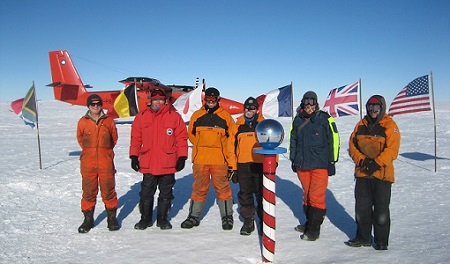- Campaigns
- PolarGap
PolarGap
Overview
What was the purpose of PolarGap?

The ESA PolarGap airborne gravity, lidar/radar and aeromagnetic survey was carried out in Antarctica in the field season 2015/16.
The primary aim of PolarGAP was to fill in the GOCE southern polar gap with new high-quality airborne gravity data, and the associated estimation of gravity gradients at altitude, as well as collecting Ku-band radar data (ASIRAS) in a smaller area at the southern limits of the CryoSat orbit, to get data on radar penetration into the snow and firn, in order to improve understanding of apparent anomalies in elevation changes in the region.
In addition, aeromagnetic and ice-penetrating radar data were collected on an opportunistic basis, providing additional datasets of relevance to the Swarm mission and augmenting continental scale compilations such as BEDMAP 2 and ADMAP 2.
What was the outcome of PolarGap?
The PolarGap 2015/16 survey was a major success, with nearly 100% of planned data acquired, relative to the campaign implementation plan. The campaign was – in addition to ESA – supported by in-kind contributions of the British Antarctic Survey, DTU Space, the Norwegian Polar Institute, as well as the US National Science Foundation, the latter providing access and fuel at Amundsen-Scott South Pole Station, a key logistics element for successfully accomplishing the mission goals.
Download PolarGap Final Report
| Data Coverage (Years) | 2015-2016 |
| Release Date | November 2018 |
| Geographic Site | Antarctica |
| Field of Application | Airborne altimetry, gravity, lidar and magnetic data SAR |
| Data Size | ~2 GB |
| LIDAR Data | Available |
Digital Object Identifier: https://doi.org/10.5270/esa-8ffoo3e - PolarGap: "Filling the GOCE polar gap in Antarctica and ASIRAS flight around South Pole"
Data
The campaign data is available online via FTPS upon submission of a data access request. An active EO Sign In account is required to submit the request.
The data can be downloaded via an FTP client (e.g., FileZilla or WinSCP) using the option "Implicit FTP over TLS".
For further information about the EO Sign In Service you can visit TellUs
Should you need support please contact EOHelp